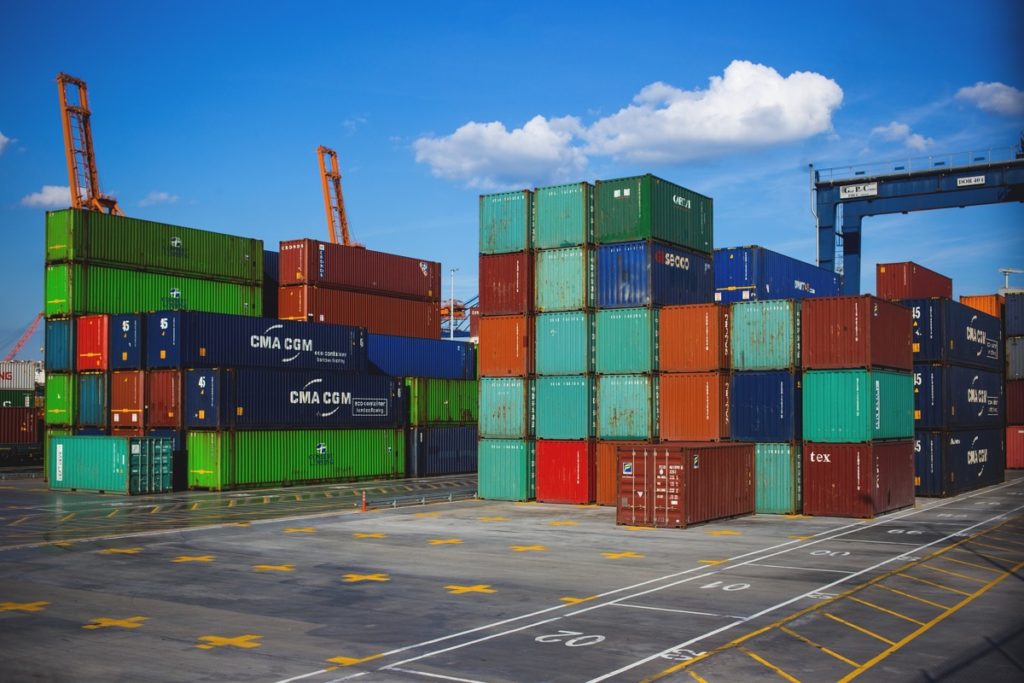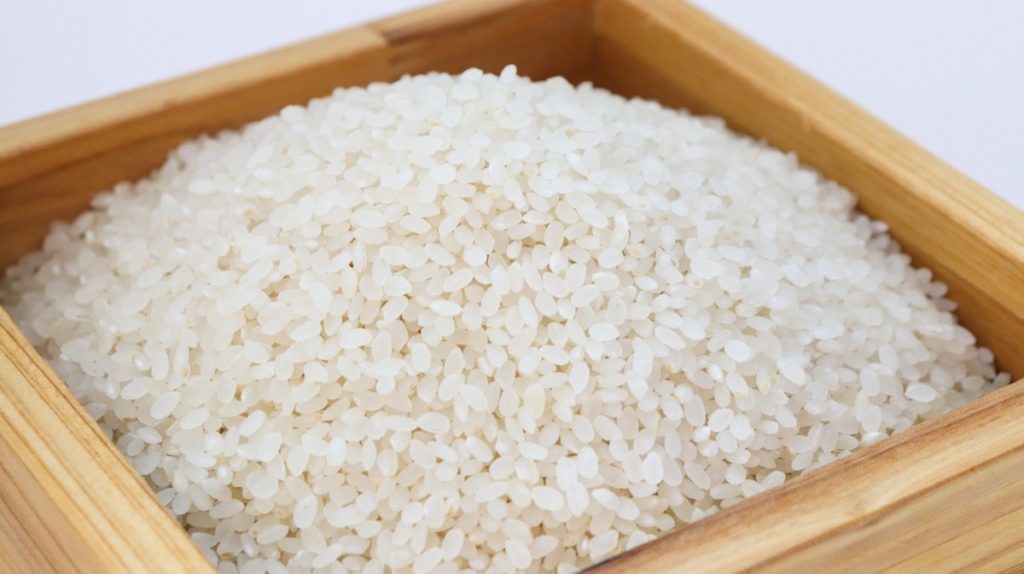Introduction to Rice Export Business in India: India is a country that is rich in cultures, traditions, festivals, and ethnicities, which accounts for its diverse food culture. There are a variety of Indian delicacies made from wheat, rice, pulses, and cereals. Indian rice and wheat have gained supremacy over these two kinds of cereals. In India, one can find rice or wheat dishes on nearly every dinner table. A country like India is agrarian, and rice is sown, harvested, reappeared, and consumed in a large quantity.
A rice export business could be a profitable venture to invest in if you’re exploring import-export business ideas. What is the first question that would come to someone’s mind – How to start a business in import-export? In this article, we will address that question. Let’s begin by understanding what the export business is all about before moving on to the main topic.
Guide to start a rice export business in India, registration process and action plan to export rice

What is Export Business?
An export business involves shipping goods from a country that produces them to a country that receives them. Many comprehensive aspects of exporting include highly potential markets and dynamic investments. Let’s move on to the step-by-step guide for starting an import-export company.
Steps for an import-export business plan
1. Establishing an organization
It is the first step in building an organization to have a brand name and logo that appeal to the international market. Establishing the ownership of a firm, whether a sole proprietorship, a joint family business, a partnership, etc., is necessary.
2. Bank Account
To open a current account with a nationalized or multinational bank with foreign exchange authorities under the name of your company, you must open it in the name of the company. A properly documented organization shall never have a grey day.
3. Permanent Account Number
An Indian company that engages in foreign trade must have a Permanent Account Number (PAN) issued by the Income Tax Department of India. This number is used for securing all international transactions with India.
4. Import-Export Code
By using the PAN as a base, the Regional Authority of the Directorate General of Foreign Trade (DGFT) generates an import-export code. Import-export firms must therefore obtain this number in order to be able to do business.
5. Acquiring the RCMC
To qualify for benefits and concessions under the Foreign Trade Policy 2015-20, importers and exporters must obtain the Membership and Registration Certificate. Through the RCMC, entrepreneurs can receive services from Community boards, Export promotion councils, and other governing bodies.
6. Cover up the risks with ECGC
Non-payment by the buyers is the most important risk factor in the export business. As a result, the Export Credit Guarantee Corporation Limited (ECGC) covers the foreign trade risks.
In case if you miss this: Green Business Ideas to Make Money and Save Environment

Registration process
Rice is one of India’s most important crops; in fact, Basmati rice is one of the most exported from India. Iran, Saudi Arabia, Iraq, Kuwait, the United Kingdom, and others are some of the prominent buyers of Indian Basmati rice. Hence, exporting rice from India is proved to be a profitable business, and if you are interested in starting an import and export business should not ignore this aspect. So, you need to register the company with the below list to start exporting rice from India to abroad. In order to conduct seamless import and export business, they must have the IEC code.
In this article, you can get all the details regarding how to start the Rice Export Business in India.
1. Initiate the process with the registration of the firm
Registering your firm is the first step. Import and export businesses can be started as sole proprietorships, partnerships, trusts, or limited liability companies. If you decide to start a company, you must register it. The registration process typically takes about 20 days to complete. A PAN number will be issued to you once you have registered your company. It will take less than 40 days to receive this.
2. Get the IEC code
You must obtain the IEC code once you have successfully registered the company. For companies that want to do import and export business, this is a requirement. A DGFT portal is the best way for you to apply for an IEC code; you can do so online. For this process, you need the below-listed documents:
3. Pay the fees to get the business registration
To apply, you will need to submit a demand draft. In case of offline registration, this fee must be sent to the Directorate General of Foreign Trade, and in the event of an online application, it can be paid online.
4. Bank certificate
A banker’s certificate would be the next important document you will need. A copy of this document must include the company’s details, account number, directors, and the owner’s photo. All remittances and payments will be made to this account only, which verifies the credibility of the business.
In case if you miss this: Top 11 Business Ideas to Start on Wheels

5. PAN card is mandatory
PAN cards need to be submitted to the income tax department as well. Ensure that you add both sides of your PAN card.
6. Photographs required
As part of the application process, the director must also submit a full-size photo, which must be attested. The scanned copy of the photograph needs to be attached to the application form if it is submitted online.
7. MOA
The registrar issues the MOA certificate and it must be attached to the application.
8. Company registration certificate
It is necessary to register a company in India to run a business, and a copy of the certificate is attached to the application. According to section 59 of the Indian Partnership Act of 1932, this certificate is being issued
9. Choose Target Country
The market must be studied simultaneously with your application for IEC registration. A list of the nations that import rice from India, including some of the ones listed above, would be handy. Those were the basics of starting rice exports from India. In order to run a seamless business and receive other assistance from India, one must have the IEC code regardless of the commodity exported.
In order to begin offshore trading, you must have some of these foundations in place. We will now discuss one of the best export business ideas that will also answer your question about how to start a rice export business?
Business Plan to start rice export business in India
For decades, India has been one of the most important exporters of rice in the global economy. About 40.45 lac metric tonnes of basmati rice and 63.66 lac metric tonnes of non-basmati rice were exported by India in 2015-16. Therefore, you can judge the total value of this business idea based on the facts and figures.
In order to stabilize and expand one of the best export business ideas in the country, you must complete the following steps after you have all the documentation in place.
Market Research
After you decide to run a rice export business in India, you must familiarize yourself with current export trends, market size, and capacity, ongoing competition, foreign policies, etc. Before entering foreign waters, thorough research is required. You will be in a better position than others if you learn about Indian policies and foreign countries’ norms.
In case if you miss this: YouTube Channel For Kids, How To Start

Branding your product
Creating a brand name, a brand identity, and marketing it dynamically is the next step. The creation of a visual identity includes the creation of a website that meets international standards and has all the latest tools. Your brand will gain and retain trust from clients if you keep it updated and updated periodically.
Locating procurers required
In the next step, we would explore the community of farmers, suppliers, vendors, distributors, buyers, dealers, and other middlemen. If you want to eliminate the middlemen from the process, you can purchase rice directly from the farmer instead of from the supplier. Rice obtained from farmers can be highly advantageous since you can get the product at the best quality and lowest prices. Another option is to tie up with a certain number of farmers in a specific area such as Telangana, Andhra Pradesh, Kerala, Karnataka, etc. Rice paddy fields in the entire south of India are lush green, watery, and can be considered as your best option for picking raw materials. Taking your trade further requires you to tie up with foreign traders and marketers following this phase.
Types of Rice Exported from India
The rice grown and harvested on the soils of India is rich in varieties including Basmati, Ambemohor, Bamboo, Kolam, Indrayani, Mogra, Jeera Samba, Parmal, Ponni, Sharbati, Sona Masuri, Surti Kolam, Wada Kolam, and the list goes on. Exports of rice are mainly divided into two types, namely Basmati and Non-Basmati. Among all rice varieties, basmati is considered to be king. A long, sleek grain, pale beige color, and a strong aroma characterize Basmati rice grains. The largest producer of Basmati rice in the world is India, making it an excellent product to sell in international trade. Therefore, you can earn good money by exporting Basmati rice across continents.
Finances required to start Rice Export Business
If you want to take your firm international, creating a strong brand for your company will be the foundation of your success. It is critical to provide customized samples branded with your brand to prospective buyers in order to stand out in the international market. The buyers will surely contact you for further orders and contracts once they are happy and satisfied with the samples. You can sell your rice to 5-star hotels, restaurants, cafes, supermarket chains, department stores, and e-commerce sites like Amazon.
Costing Analysis
Whether a venture is launched, stabilized, expanded, or closed, it is dependent on its costs. If one invests heavily in the export of rice, one should have a strategy to invest slowly and steadily. Before establishing pricing policies, a thorough analysis of the international market must be conducted. At the same time, offering a competitive price and a good quality will bring you long-term clients and larger contracts.
In case if you miss this: Money Making Home Jobs For Retirees

Conclusion
It is our belief that the vital information provided in this article will answer your question on how to start an import and export business, specifically a rice export business. Entrepreneurs should remember that their brand, as well as the country’s prestige, are at stake when reaching out across borders.
With the economic conditions of India not being much inviting, Investing in newer avenues like these opens a wider and broader market for you and the country. Hence, attentive investing of your time, money, patience, and hard work will result in greater and brighter results internationally.
- Handicraft Making at Home: A Small Profitable Business Idea
- Pet-Tech Startups: Innovations for Animal Lovers
- Tech Repair Services: Meeting the Demand for Gadget Maintenance
- Maximizing Rewards: Smart Credit Card Habits for Cashback and Points
- Ultimate Guide to Making Money from Goat Milk Business
- How to Start an Agricultural Value Added Product Business
- Value-Added Business Ideas for Greenhouse: The Best Ways to Make Profits with Greenhouse Farming
- How to Make Profits with Organic Country Chicken: Best Strategies for Beginners
- 10 Value-added Business Ideas for Millets: Low-investment and Highly Profitable
- Why Cleaning Service Business Becoming More Profitable in Metro Cities in India
- 10 Best Businesses to Start in Ayodhya for Profits
- Top Drone Business Ideas in India: Unlocking Aerial Innovation & Opportunities
- Top 10 Service Businesses You Can Start with No Money
- Ultimate Guide to Starting a Home-Based Advertising Agency Business
- Starting a Nail Salon Near Your Location: Check List, Business Plan, Licensing, and Opening Instructions
- Construction Company Name Ideas: Guide to Create New Construction Company Names
- 8 Best Small Businesses to Start in Hyderabad: Low-Cost and Profitable
- 10 Best Small Businesses to Start in Massachusetts: Low-Cost and Profitable
- 10 Best Small Businesses to Start in Maryland: Low-Investment and Profitable
- 10 Best Small Businesses to Start in Delaware: Low-Investment and Profitable
- 10 Best Small Businesses to Start in Connecticut: Low-Investment and Profitable
- Top 10 Best Online Pet Business Ideas: Exploring Cats to Dogs
- 10 Best Small Businesses to Start in Colorado: Low-Investment and Profitable
- Top 10 Profitable Small Business Ideas in California: Low-Investment Tips
- From Little Rock to Fayetteville: Top 10 Profitable Small Business Ideas in Arkansas
- Top 10 Profitable Small Business Ideas in Alabama: Discover Opportunities in Alabama’s Growing Cities
- Top 10 Profitable Small Business Ideas in Arizona: Discover Opportunities in Arizona’s Growing Cities
- Golf Business Ideas: Exploring Golf Course Money Making Ideas
- Low Capital Profitable Small Farm Ideas: Farming Ideas to Make Money
- How to Write a Business Plan for Daycare: Exploring from Financial Projections to Risk Management
- Home Daycare License Requirements: Exploring State-wise In-home Daycare Requirements
- How Profitable is Day Care Business: How Much Does a Daycare Owner Make a Month or Year?
- How to Open a Daycare Center in Toronto, Canada: Business Plan, Licenses and Permits
- How to Start Meal Prep and Delivery Services: A Popular Business Idea
- How to Start a Milk Chilling Plant Business
- How to Start Coconut Shell Charcoal Business: Business Plan for Maximizing Profits